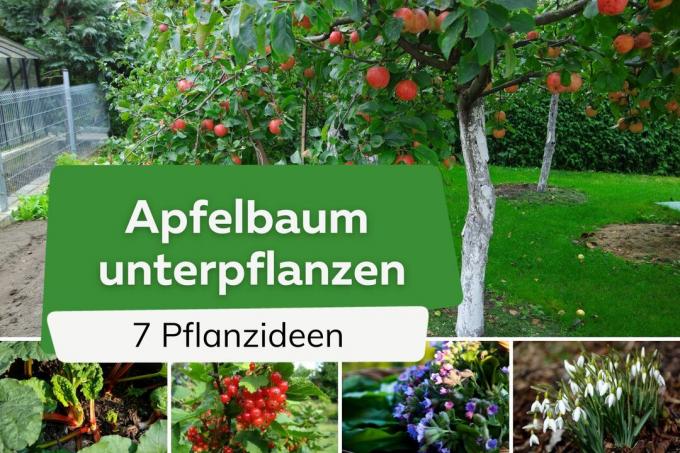
Planting an apple tree in a bed or in a meadow is not only a good option visually. Many plants also bring the tree advantages in terms of protection, care and better fruit formation.
In a nutshell
- Underplanting provides more shade for the roots
- some plants keep uninvited pests away
- promote nutrient-rich soil
- flowering plants can attract insects for pollination
- Plants must not compete
Table of contents
- Plant apple tree
- Suitable ground cover
- perennial underplanting
- Plants against pests
- nutrient suppliers
- bulb flowers
- Leek plants against diseases
- Roses for optics
- frequently asked Questions
Plant apple tree
Underplanting under the apple trees not only looks good, they can also offer the tree many advantages. To ensure that the apple tree is not deprived of valuable nutrients or water, it is important to avoid plants that consume a lot when planting underneath. In addition, no deep-rooting plants should be used in the direct area of the tree grate, as they do more harm than good to the tree, as they compete. The advantages of suitable underplanting are as follows:
- better shading in the root area
- Moisture stays in soil longer
- more visually appealing
- can protect against various diseases
- attracts insects for pollination
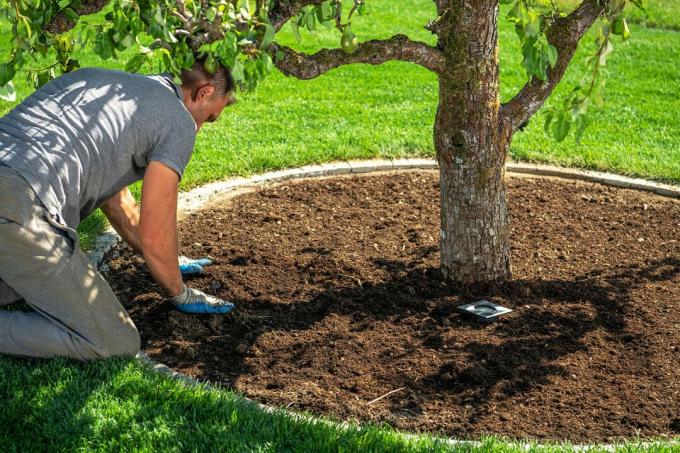
Suitable ground cover
You can cultivate different plants under an apple tree. Ground cover in particular provides shade over the root area. In addition, the flowering plants have a particularly decorative effect on the area that usually remains free here:
- Lady's Mantle (Alchemilla)
- Bluebells (Hyacinthoides)
- Cranesbill (Geranium)
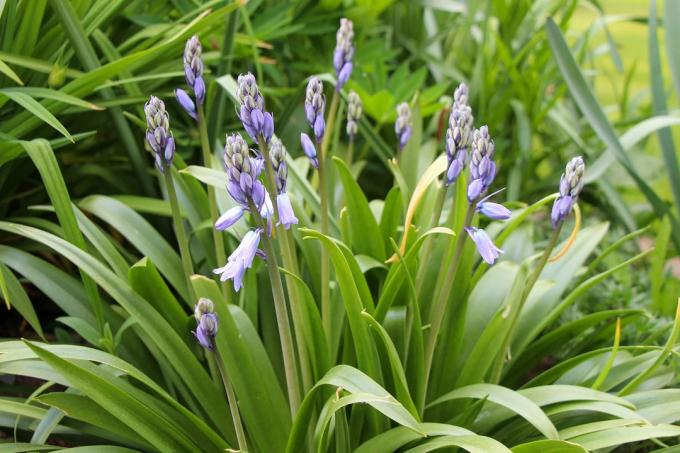
Tip: Even if the apple tree was planted on a lawn, underplanting is a good idea for the look. Because the lawn directly under the tree is usually crowded out by too much shade and the roots and the area remains earthy and empty.
perennial underplanting
Under the apple tree, depending on its size, it can get very shady over the years. Perennial, shallow-rooted perennialsPlants that do well in a shaded location are a good choice. They are usually easy to care for and the planting does not have to be renewed every year. Here we offer:
- Columbine (Aquilegia)
- Autumn anemones (Anemone hupehensis)
- Stonecrop (Sedum)
- Spotted Lungwort (Pulmonaria officinalis)
- Marigolds (Calendula officinalis)
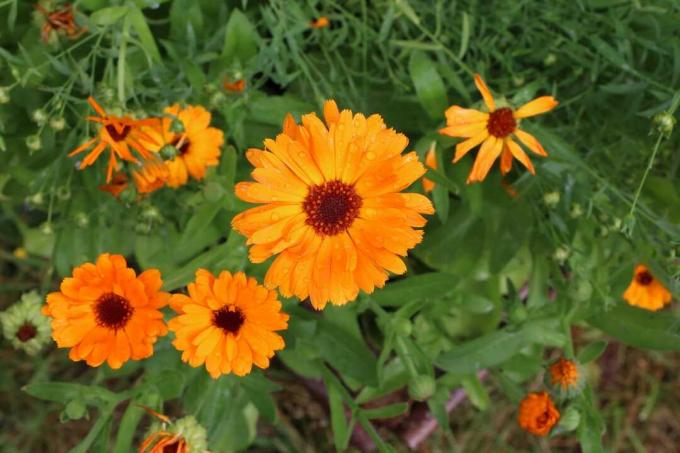
Plants against pests
There are various herbs but also flowering flowers that offer the apple tree the advantage of keeping pests away due to their intense smell. The smell spreads upwards and the pests then avoid infesting the apple tree. These plants include:
- Currants (Ribes)
- Garlic (Allium sativum)
- tagetes
Tip: Currant bushes should not be planted directly under the apple tree in the root area. But all around and in the immediate vicinity of the tree, they should keep voles away, which could also damage the apple tree. The shrubs are particularly suitable for espalier apple trees.
nutrient suppliers
There are plants that are suitable for underplanting an apple tree, as they can add nutrients to the soil that the tree needs for a rich flowering and later harvest. Live mulch deliver:
- Nasturtium (Tropaeolum majus)
- Rhubarb (Rheum rhabarbarum)
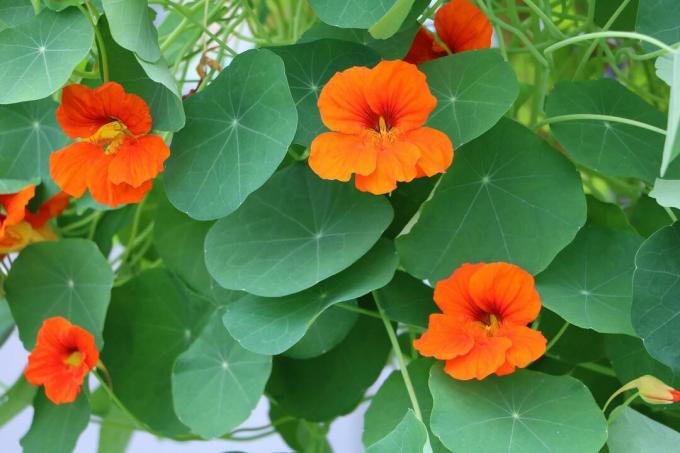
For this purpose, the dead parts of the plants are not removed but remain and give so the nutrients into the soil, which are absorbed with the rainwater through the roots of the apple tree become.
bulb flowers
The early blooming onion flowers provide the first dash of color in the garden after winter. These have the advantage that they can benefit from the sun, which shines through the still bare treetops. In the summer, however, after the bulbs have faded, they are protected from too much sunlight in the ground. bulb flowers you can distribute numerously and extensively under the apple tree:
- Crocuses (Crocus)
- Daffodils or daffodils (Narcissus)
- Snowdrop (Galanthus)
- Grape Hyacinths (Muscari)
- Tulips (Tulipa)
- Winter lice (Eranthis hyemalis)
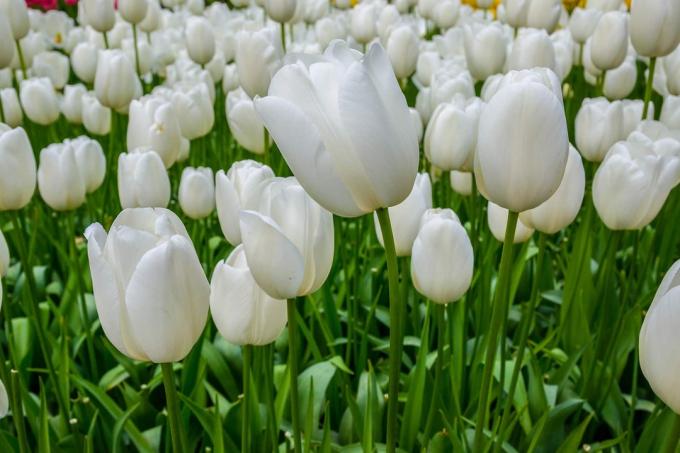
Leek plants against diseases
Apple scab is a disease that very often affects apple trees in these latitudes. Against this, the underplanting with leeks is a good idea, because they have the ability to reduce the risk of this disease through their roots:
- Garlic
- Chives (Allium schoenoprasum)
- Chives (Allium ramosum)
- Ornamental onion (Allium nevskianum)
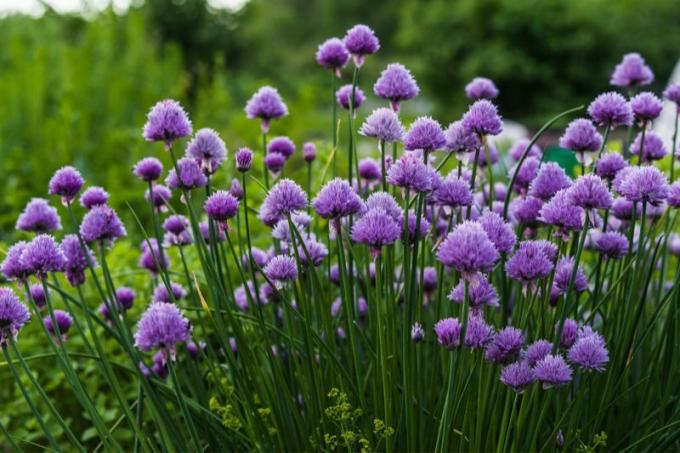
Tip: Leek plants are also plants that have a beautiful develop bloom, if left standing. In addition, they have the advantage that they can also be harvested to use in the kitchen. If you want to reconcile both flowering and use, only leave some of the plants until they flower and harvest the others in between.
Roses for optics
Roses are conditionally suitable as underplanting of apple trees. They should always be planted at least one meter from the tree so that the roots do not get in each other's way. Ideally, the rose stems are cultivated at the same time as the young apple tree. Then the roots of the tree have not yet spread and the roses can take root better. The crown of the tree should also be high enough that the rose trunks receive enough sun. There are varieties that are suitable for underplanting:
- bed roses
- groundcover roses
- rambler roses
frequently asked Questions
Underplanting can make sense if it doesn't get in the way of later picking in late summer and fall. Therefore, when cultivating under the tree, you should make sure that there is enough space for a Ladder is created between the individual plants and do not place them directly near the trunk insert.
The blossoms of the apple tree must be pollinated by insects so that the tree produces many fruits and a rich harvest can be expected. The more blooming flowers are nearby, the more bees, bumblebees and other nectar-loving insects will be attracted.
If you do not want to underplant the tree, you should still protect the roots from possible drought and at the same time provide the tree with nutrients. This is ideal bark mulch which also looks good from a visual point of view. If there is a meadow or lawn on the property, lawn clippings distributed around the tree are a good way to provide protection.
This depends on the apple tree to be underplanted. If this is an old tree with a large crown, then it is advisable to only use plants that handle shadows well. Apple trellises, on the other hand, often offer enough sunlight down to the ground, so that you can also cultivate sun-kissed plants here.



